

Home
About Us
Allotments
Garden Equipment
Seed Suppliers
Manure Problems
Children's Pages
GLA Blog
Weather Blog
School Veg Patch
Useful Links
Plant Protection
** This website is not a shop and doesn’t sell anything! **
Be aware that any external links may contain cookies and you should refer to the particular website's cookie policy
Many of our crops are subject to the attentions of various hungry creatures and without protection would not produce a good harvest. One answer is to wage war on the creatures that cause us problems and resort to a chemical spraying regime.
With many of us being reluctant to use a barrage of chemicals on our crops there is a need to try to prevent rather than cure the problem.
We use a variety of ways of protecting our fruit and vegetables.
Carrot fly can be a huge problem but for several years now we have grown carrots successfully by protecting them using a covering of fleece or enviromesh. Click here to read more. We find that the environmesh although more expensive does last longer. When we used fleece it was often ripped by the wind also whenever a neighbouring plot holder had a bonfire the sparks burnt holes in the fleece.
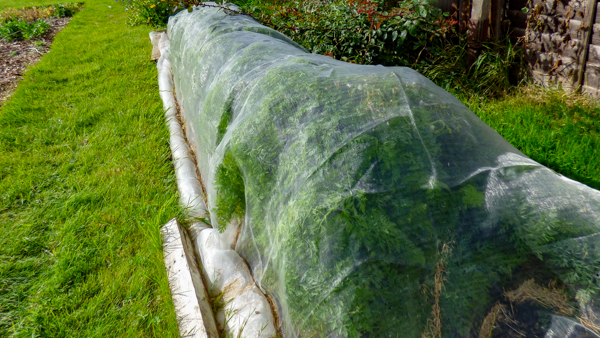
The mesh 'floats' over the carrots and is loosened as the carrots grow. The mesh is removed in winter when the danger of carrot fly has passed and in its place the carrots are covered with straw.
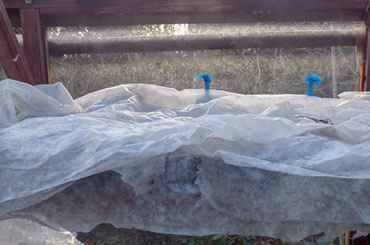
Fleece is still useful for using in a greenhouse where it can help protect against frost damage when the temperatures fall.
We cover our seed potatoes that are chitting in the greenhouse if frost is forecast.
Brassica plants are subjected to attack by wood pigeons, by large and small white butterfly caterpillars and by whitefly (among a myriad of other things. We used to cover our brassicas with netting as soon as we planted them out but removed the netting from brassicas that stay in the ground over winter. We found that if there is heavy snow the netting is weighted down onto the plants and can damage them The snow on the other hand will build up gradually on the plants and is less likely to damage them.
This method gives some protection against butterflies as is equally effective protection against wood pigeon attack but did nothing to protect against whitefly. As a result we now cover with enviromesh. A decision has to be made at some pointy as to whether the plants are more at risk of snow or pigeon damage.
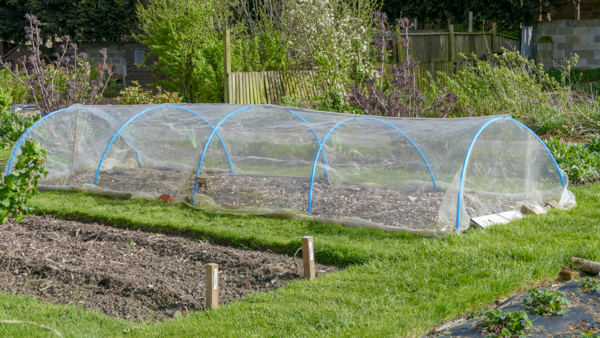
We also cover our strawberries, blueberries and redcurrants as both of these fruits are attractive to birds. Blackbirds will often make every effort to find a way into our redcurrant bushes. We net all of these fruits with netting designed to protect against birds.
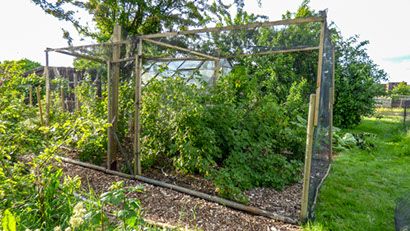
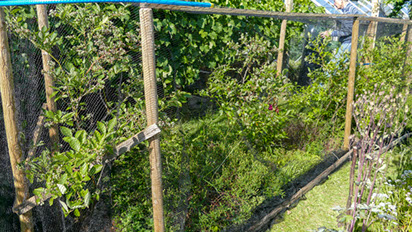
The blueberries and redcurrants are covered by homemade cages. The redcurrant cage is tall enough for us to walk inside but the blueberry cage is lower.
The netting over the strawberries is supported by a series of half hoops. We prefer to buy the soft netting s this is easier to handle. If fruit needs to be pollinated then it is important the the holes in the netting are large enough to allow pollinating insects access.
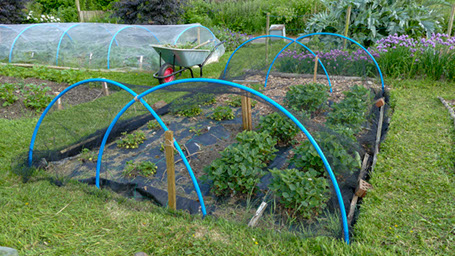
Birds can become trapped in any loose netting especially at ground level so netting needs to be tightly stretched and well tucked under heavy pieces of wood or bricks.
I’ve gathered together some links from companies offering gardening products for sale. I have no connection to the suppliers and therefore cannot be held responsible for any changes in items available or any issues that may arise when making a purchase.
Some companies give me a small commission on sales that are generated from this website which helps me to maintain this and sister websites but this in no way means that I am recommending purchases from a particular company.
Our Plot at Green Lane Allotments Blog | A Gardener's Weather Diary | School Vegetable Patch Website
© Our Plot on Green Lane Allotments - Please email me if you wish to use any of this site's content